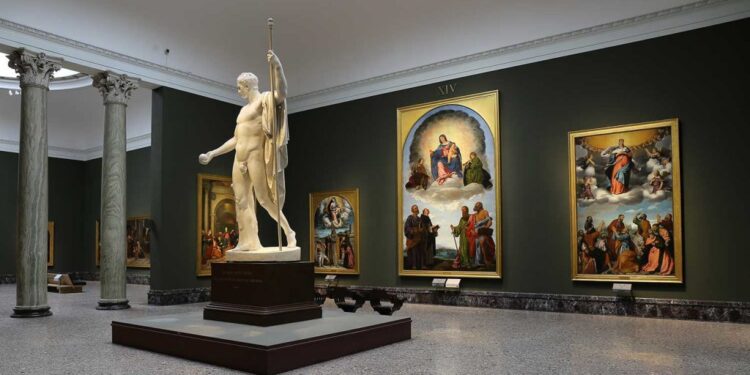Thanks to Virtual Reality, it is possible to explore Milan and “get lost” among the works of the Pinacoteca di Brera: the masterpieces of painting are online in very high definition
In Milan, the Pinacoteca di Brera has closed its doors but has allowed thousands of fans to admire its masterpieces from a distance. Thanks to a challenging digitization campaign, all the paintings of the Milanese Academy have been “uploaded” online in very high definition. Users can get closer (much closer than allowed in the real museum), zoom in, linger on details and catch details that would escape the naked eye. In addition, united by the hashtag #cronachedalmuseochiusouso, the Pinacoteca’s workers post videos, photos and interactive content on social networks to “keep alive” the corridors and the thirty-eight rooms of Brera. One of the most interesting columns is “Notes for a cultural resistance” and I suggest you don’t miss the romantic explanation of “The Kiss” by Francesco Hayez that Riccardo Taiana (Assistant to the fruition, reception, supervision of the Pinacoteca di Brera) published. The Museum of Science and Technology in Milan also offers daily pills and interactive content on social networks. The guides accompany followers on guided tours online and answer questions during interesting live streaming.
Read also → 20 years of Wikipedia. Curiosities about the most famous encyclopedia in the world
Milan and the Pinacoteca di Brera in Virtual Reality
Remaining in Milan, the Giuseppe Verdi Symphony Orchestra shares for free on the web the concerts recorded (behind closed doors) on the stage of the Auditorium, while La Triennale has launched the project “Triennale Decameron: streaming stories in the era of the new black plague”. Every day at 5 p.m., artists and cultural figures intervene live on Instagram and tell a story: so far, Sandro Veronesi, Victoria Cabello, Linus and Michela Murgia have also participated. Also on Instagram, the Museum of the History of Medicine of Padua (MUSME) offers interactive guided tours: expert guides accompany visitors on a two-hour journey along three floors and eight thematic spaces, each dedicated to an apparatus of the human body, with questions and quizzes. Visitors can virtually leaf through ancient books, see their own reflection on a magic mirror that “shows” the bones and muscles, observe under the microscope the main pathogens of diseases, learn about the history of epidemics and understand something of the new Coronavirus.
You might also be interested in → Virtual Reality: you can visit the Trajan’s Market in Rome from the sofa at home

































